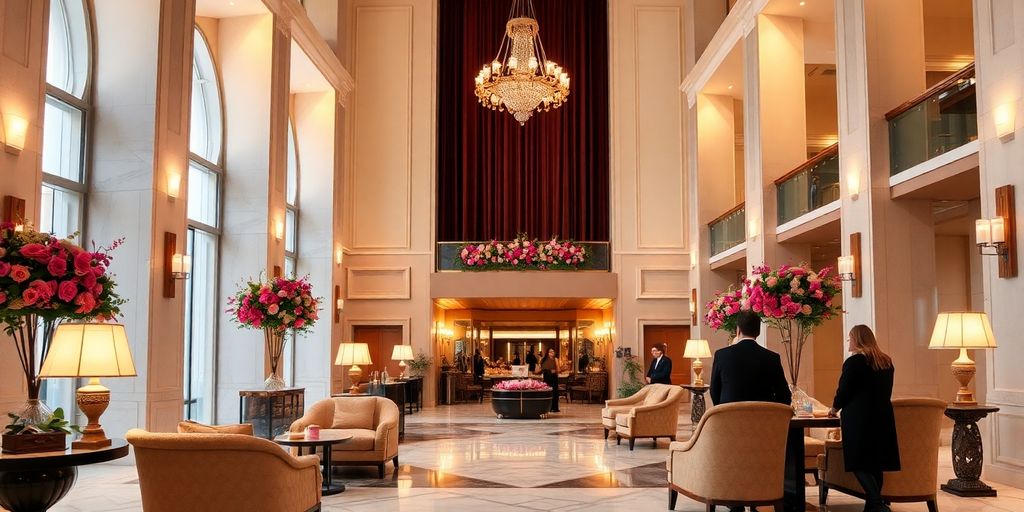Exploring the Golden Ratio and the Interconnectedness of All Things

The golden ratio is a fascinating concept that appears in many areas of life, from nature to art and even technology. This special number, often represented by the Greek letter phi (φ), is about 1.618 and has intrigued people for centuries. In this article, we will explore how the golden ratio connects different aspects of our world and highlights the beauty of interconnectedness in all things.
Key Takeaways
- The golden ratio is a unique number that shows up in nature, art, and math.
- It can be found in the arrangement of leaves, flowers, and even animal bodies.
- Many famous artists and architects have used the golden ratio to create beautiful works.
- This ratio helps designers create pleasing layouts and visuals.
- Understanding the golden ratio can change how we see and appreciate the world around us.
The Mathematical Beauty of the Golden Ratio
Understanding the Fibonacci Sequence
The Fibonacci sequence is a series of numbers where each number is the sum of the two preceding ones. It starts with 0 and 1, leading to a pattern that appears in various aspects of nature. This sequence is closely linked to the golden ratio. Here are the first few numbers in the Fibonacci sequence:
| Fibonacci Numbers |
|---|
| 0 |
| 1 |
| 1 |
| 2 |
| 3 |
| 5 |
| 8 |
| 13 |
| 21 |
| 34 |
The Golden Ratio in Geometry
The golden ratio, often represented by the Greek letter phi (φ), is approximately 1.618. It can be found in various geometric shapes, such as rectangles and spirals. Here are some key points about its geometric properties:
- A golden rectangle has sides in the ratio of 1:φ.
- Spirals that follow the golden ratio can be seen in shells and galaxies.
- Triangles can also exhibit the golden ratio in their proportions.
Applications in Modern Mathematics
In modern mathematics, the golden ratio is not just a concept but a tool used in various fields. It appears in:
- Calculus: In optimization problems.
- Number Theory: In the study of prime numbers.
- Computer Science: In algorithms and data structures.
The golden ratio is more than just a number; it represents a connection between mathematics and the beauty of the world around us.
This mathematical principle is often seen as beauty’s mathematical code, revealing how interconnected everything is through its patterns and proportions.
Conclusion
The golden ratio is a fascinating concept that bridges mathematics, nature, and art. Its presence in various fields highlights the interconnectedness of all things, making it a subject worth exploring further.
Historical Significance of the Golden Ratio

Ancient Civilizations and the Golden Ratio
The golden ratio has fascinated people for centuries. Ancient Greek mathematicians first studied the golden ratio because of its frequent appearance in geometry. They found that dividing a line into two parts, where the longer part divided by the shorter part is equal to the whole line divided by the longer part, creates a special relationship known as the "extreme and mean ratio."
The Renaissance and Artistic Proportions
During the Renaissance, artists and architects embraced the golden ratio to create beautiful works. They believed that using this ratio would lead to more pleasing and harmonious designs. Some famous examples include:
- Leonardo da Vinci’s paintings, which often feature the golden ratio in their composition.
- Michelangelo’s sculptures, which reflect proportionality based on this ratio.
- Filippo Brunelleschi’s architectural designs, which utilized the golden ratio for balance and beauty.
The Golden Ratio in Architecture
The golden ratio has also played a significant role in architecture throughout history. Many structures, such as the Parthenon in Greece, are believed to have been designed using this ratio. This has led to a sense of harmony and balance in their appearance. Here are some notable examples:
- The Parthenon – A symbol of ancient Greece, showcasing the golden ratio in its facade.
- The Great Pyramid of Giza – Its proportions are thought to reflect the golden ratio.
- Notre-Dame Cathedral – Features elements that align with the golden ratio, enhancing its aesthetic appeal.
The golden ratio is not just a mathematical concept; it represents a connection between art, nature, and the universe. Its presence in various fields highlights the interconnectedness of all things, revealing a deeper understanding of beauty and proportion.
The Golden Ratio in Nature
Patterns in Plants and Animals
The golden ratio can be found in many living things. For example:
- Sunflowers have seeds that grow in spirals, often following the golden ratio.
- Pinecones and pineapples also show this pattern in their scales.
- Many flowers have petals that are arranged in a way that reflects this ratio.
The Human Body and Proportionality
Interestingly, the human body also exhibits the golden ratio. Some examples include:
- The ratio of the length of the forearm to the hand.
- The distance from the head to the navel compared to the total height.
- The proportions of facial features, like the distance between the eyes and the width of the face.
Natural Phenomena Exhibiting the Golden Ratio
The golden ratio appears in various natural events. Some notable examples are:
- Hurricanes and their spiral shapes.
- The Milky Way galaxy, which has a spiral structure.
- Shells of certain mollusks, which grow in a logarithmic spiral.
The golden ratio is not just a number; it represents a connection between art and nature, showing how everything is linked in a beautiful way.
In summary, the golden ratio is a fascinating concept that connects many aspects of nature, from plants to the human body and even cosmic structures. It highlights the interconnectedness of all things, revealing a hidden beauty in the world around us.
The Golden Ratio in Art and Design
Influence on Classical Art
The Golden Ratio has been a guiding principle for many artists throughout history. It is often seen in famous works, such as:
- The Last Supper by Leonardo da Vinci
- The Mona Lisa by Leonardo da Vinci
- The Parthenon in Greece
These pieces use the ratio to create balance and beauty, making them visually appealing.
Modern Design Principles
In today’s world, designers still use the Golden Ratio to create harmony in their work. Here are some areas where it is applied:
- Graphic Design: Layouts and logos often follow the ratio for better aesthetics.
- Web Design: Websites use the ratio to arrange elements pleasingly.
- Product Design: Items are shaped and sized based on the ratio for a more attractive look.
The Role in Visual Harmony
The Golden Ratio helps in achieving visual harmony. It guides the placement of elements, ensuring that everything fits together nicely. This principle can be seen in:
- Photography: Composing shots using the ratio for balance.
- Interior Design: Arranging furniture and decor based on the ratio.
- Fashion Design: Creating clothing that flatters the body shape.
The Golden Ratio is not just a mathematical concept; it is a tool that connects art and design, creating a sense of beauty that resonates with viewers.
In summary, the Golden Ratio is a powerful tool in art and design, influencing everything from classical masterpieces to modern creations. If you’re a designer or artist, you should know about the golden ratio.
Philosophical Perspectives on the Golden Ratio
Symbolism and Spirituality
The Golden Ratio is often seen as a symbol of balance and beauty in the universe. Many cultures believe that this ratio connects us to deeper meanings in life. It represents harmony and proportion, which can be found in various aspects of existence.
The Golden Ratio as a Universal Constant
This ratio appears in many places, from nature to art, suggesting that it might be a universal truth. It’s fascinating how the same number can be found in different areas, showing a connection between all things. Here are some examples:
- Nature: Plants and animals often display this ratio in their growth patterns.
- Art: Many famous artworks use the Golden Ratio to create pleasing compositions.
- Architecture: Buildings designed with this ratio are often considered more beautiful.
Interconnectedness in Philosophical Thought
The idea of interconnectedness is central to many philosophies. The Golden Ratio serves as a reminder that everything in the universe is linked. Finding the Golden Ratio in esoteric philosophy highlights its mystical significance: the golden ratio is regarded as a mystical and divine proportion that embodies the essence of universal harmony and cosmic balance.
The Golden Ratio teaches us that beauty and balance are not just in art and nature, but also in our understanding of the world around us.
This perspective encourages us to look for connections in our lives and appreciate the beauty that surrounds us.
The Golden Ratio in Technology and Innovation

Designing with the Golden Ratio in Mind
The Golden Ratio is not just a mathematical concept; it plays a significant role in technology and design. Many designers use this ratio to create visually appealing products. Here are some ways it is applied:
- User Interface Design: Many apps and websites use the Golden Ratio to create balanced layouts.
- Product Design: Items like smartphones and furniture often follow this ratio for aesthetic appeal.
- Graphic Design: Logos and advertisements frequently incorporate the Golden Ratio for better visual impact.
Technological Applications
The Golden Ratio can be found in various technologies. Here are some examples:
- Computer Graphics: Artists use the ratio to create realistic images and animations.
- Architecture Software: Programs often use the Golden Ratio to help architects design buildings that are pleasing to the eye.
- Robotics: Engineers apply the ratio to design robots that move smoothly and efficiently.
Future Innovations Inspired by the Golden Ratio
As technology continues to evolve, the Golden Ratio will likely inspire new innovations. Some potential areas include:
- Artificial Intelligence: AI could use the ratio to improve design algorithms.
- Virtual Reality: Creating immersive environments that feel natural and balanced.
- Sustainable Design: Using the ratio to create eco-friendly products that are also beautiful.
The Golden Ratio serves as a bridge between art and technology, showing how interconnected these fields can be.
In summary, the Golden Ratio is a powerful tool in technology and innovation, helping to create designs that are not only functional but also beautiful. As we move forward, its influence will likely grow, leading to even more exciting developments in the tech world.
Insights from Golden Ratio Global
Insights from the Golden Ratio Global show how this ratio fosters innovation and collaboration in the tech industry, especially at events like Gitex Global.
Critiques and Misconceptions of the Golden Ratio
Debunking Myths and Misinterpretations
Many people believe that the Golden Ratio is a magical number that appears everywhere in art and nature. However, this is often an exaggeration. While it is true that the Golden Ratio has some interesting properties, many claims about its presence in famous artworks or natural forms are not supported by solid evidence. For example, some argue that the ratio is found in the dimensions of the Parthenon, but this is debated among historians.
Scientific Criticism
Scientists and mathematicians have pointed out that the Golden Ratio is not as universal as it is often claimed to be. In fact, many of the examples cited in support of the Golden Ratio can be explained by other mathematical principles. This leads to a misunderstanding of its significance. Here are some common critiques:
- Overemphasis on its importance in art and nature.
- Misrepresentation of its mathematical properties.
- Lack of evidence in many claimed examples.
The Balance Between Myth and Reality
While the Golden Ratio is fascinating, it is essential to maintain a balance between its mythical status and its actual mathematical significance. Many of the stories surrounding the Golden Ratio are more about human perception than about reality.
The Golden Ratio is a beautiful concept, but it should not be seen as a universal truth in every aspect of life.
In conclusion, while the Golden Ratio is an interesting mathematical idea, it is crucial to approach its applications in art, nature, and architecture with a critical eye. Misconceptions can lead to a distorted understanding of its true role in our world.
| Aspect | Reality | Misconception |
|---|---|---|
| Art | Some artists use it | All art follows the ratio |
| Nature | Found in some patterns | Present in all living things |
| Architecture | Used in some designs | Essential for all structures |
Conclusion
In closing, the Golden Ratio is more than just a pretty number; it shows us how everything in our world is connected. From nature to art, this special ratio appears everywhere, reminding us that there is a balance in life. By understanding the Golden Ratio, we can see the beauty and order in the chaos around us. It encourages us to look deeper into the patterns that shape our lives and the universe. As we explore these connections, we find that we are all part of a larger picture, where every piece plays a role in creating harmony.
Frequently Asked Questions
What is the Golden Ratio?
The Golden Ratio is a special number, about 1.618, that appears in many places in nature, art, and math. It is often seen as a symbol of beauty and balance.
How is the Golden Ratio related to the Fibonacci Sequence?
The Fibonacci Sequence is a series of numbers where each number is the sum of the two before it. If you take the ratio of two consecutive Fibonacci numbers, it gets closer to the Golden Ratio as the numbers get bigger.
Can you find the Golden Ratio in nature?
Yes! The Golden Ratio can be seen in flowers, shells, and even the way some animals are shaped. It helps create patterns that are pleasing to the eye.
How has the Golden Ratio been used in art?
Artists from the past, like Leonardo da Vinci, used the Golden Ratio to make their paintings look more balanced and beautiful. It helps guide the viewer’s eye to the important parts of the artwork.
Is the Golden Ratio important in modern technology?
Absolutely! Designers and engineers often use the Golden Ratio to create products, websites, and buildings that are visually appealing and functional.
Are there any myths about the Golden Ratio?
Yes, there are many myths! Some people believe that the Golden Ratio is everywhere in art and nature, but it’s not always as common as they think. It’s important to look at the facts.








Responses